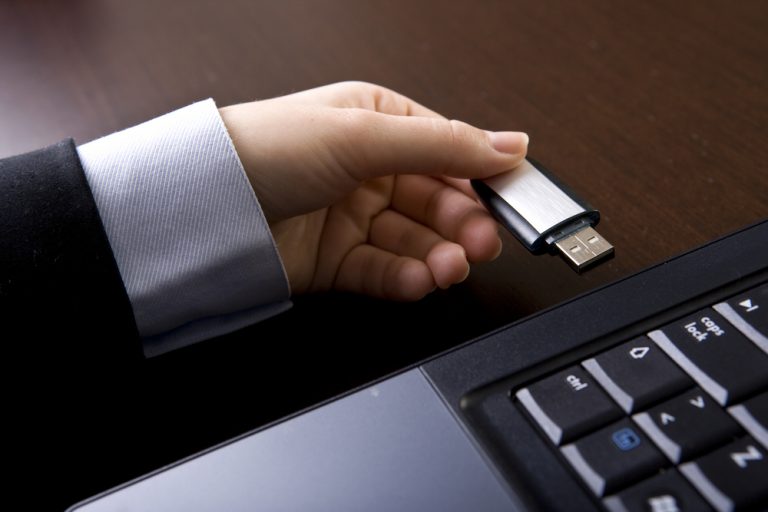As solid-state memory came into being, computer users were very excited to see the arrival of jump drives, also known as thumb drives and USB drives. It held such promise to think that a large amount of data could be carried on a tiny device that could be filled with more data faster and more durable than a CD.
Soon they were everywhere. Companies put their logos on them and sent them to customers. College students could bounce all over campus and work on whichever computer they could get to. Email attachment volume dropped as files were shared physically rather than virtually.
Of course, the more they were used, the more they were misplaced, stolen, and copied. Security became a bigger issue every day as identity thieves began to exploit these devices.
And then the Cloud blew in.
With rapid access from any computer, the massive virtual storage system did a lot of the things a USB drive couldn’t do. It held more, required almost zero effort to share, and was highly secure. The jump drive seemed to be jumping off a cliff.
But the fact is that the latest isn’t always the greatest. To be sure, the Cloud offers amazing flexibility, space, and security, but it’s not perfect. There are still some ways in which the trusty thumb drive is superior.
Security Has Improved, And Hackers Have Wandered Away
Hackers love new stuff. They understand that people will take on new technology almost immediately and that there is a resulting window of opportunity to hack in before the bugs are worked out of the system.
Now that the thieves are focusing on Cloud storage, retail networks, and the like, jump drives have gone back under the radar. They are as insecure as ever in their most basic form, but security has caught up to the point that users can get encrypted USB memory to protect files from the physical loss of a jump drive.
The diversion of hackers’ attention, along with improvements in the thumb drives themselves, has enabled these portable storage devices to increase their security dramatically, reviving their value to users of all kinds.
Really Big Can Be Too Big
Sure, the Cloud has massive capacity, and you can get as many photos, music, and files on it as you want. But when you move to the sharing side and want to allow others to access some of these things, it can be overwhelming.
Nobody wants a lot of effort to access a simple file. Imagine one of the classic thumb drive scenarios, a professional in-service at which the instructor wants to send participants back to their workplaces with templates, files, photos, presentations, or other items provided in the class. This could be accomplished with a series of massive emails that get tangled up with hundreds of others in the recipients’ mailboxes, or it can be done with a customised, encrypted thumb drive that can be tucked away safely as a free-standing physical representation of the in-service.
Additionally, some people don’t have the bandwidth to access the Cloud efficiently. Jump drives get the same files to them without a daylong buffering that brings the whole router to its knees.
Flexibility Has Grown–And The Drives Have Shrunk
Thumb drives are more than just for file storage or sharing from a computer now. With phone-compatible jump drives, users can now clear all the debris of access photos, music, downloads, and the like by putting them onto a thumb drive. That increases security by lowering the quantity of sensitive items left on the phone, and it also helps the user organise the items.
Newer flash drives have also gotten even tinier as if their initial size weren’t small enough. That has made it more practical to carry, mail, and store them, and that has increased their usefulness and value to users of all kinds.
There will always be a cycle of new products coming in and crowding out old technologies. While it’s true that certain innovations have slightly dulled the glow of jump drives, they remain versatile, useful, and inexpensive, and they’re growing ever more secure and adaptable every day. We are far from seeing the end of the thumb drive.

